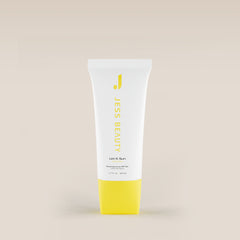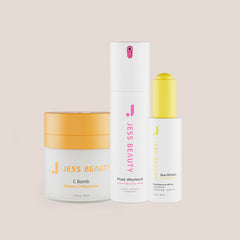We know sun protection is essential to maintain healthy skin and prevent long-term damage. However, choosing the right sunscreen can be challenging with so many options available. Factors like skin type, sun exposure, and product texture all play a role in finding the ideal match.
What Factors Should You Consider When Choosing Sunscreen?
-
Skin Type
-
Dry skin: Choose cream-based sunscreens with hydrating ingredients like hyaluronic acid or glycerin.
-
Sensitive skin: Go for mineral filters such as zinc oxide or titanium dioxide to minimize irritation.
-
Oily or acne-prone skin: Opt for gel-based or matte-finish sunscreens, ideally oil-free.
-
Skin with dark spots or melasma: Tinted sunscreens help protect against visible light and even out skin tone.
What Are UVA and UVB Protection?
Ultraviolet (UV) rays are categorized into UVA and UVB. UVA rays penetrate deeper into the skin, causing premature aging, wrinkles, and hyperpigmentation. They also contribute to skin cancer and are present all year round—even on cloudy days.
UVB rays are the main cause of sunburns and immediate damage to the epidermis. While they don’t reach as deep as UVA rays, they also play a key role in the development of skin cancer. That’s why choosing a broad-spectrum sunscreen that protects against both types is essential.
What SPF Should You Use?
Sun Protection Factor (SPF) measures protection against UVB rays. For everyday, short-term exposure, SPF 30 is sufficient. For outdoor activities, SPF 50 or higher is recommended.
How Much Sunscreen Should You Apply?
Experts suggest applying an amount equivalent to two fingers for the face and one ounce (about one tablespoon) for the body. Reapply every two hours or after swimming or sweating.
Should You Apply Moisturizer Before or After Sunscreen?
Moisturizer should be applied before sunscreen. Hydration helps maintain the skin barrier and allows humectants to absorb better. Applying sunscreen afterward ensures it forms a uniform, protective layer.
After cleansing your face, apply serum or moisturizer and wait a few minutes. Then, apply sunscreen as the final step of your skincare routine—before makeup, if used.
Tinted or Non-Tinted Sunscreen?
Tinted sunscreens offer dual benefits: UV protection and tone correction. They help conceal imperfections like dark spots or redness and are ideal for those who want light coverage without extra makeup. Many also protect against blue light from digital screens.
Non-tinted sunscreens are perfect for those who prefer a lighter texture and a transparent finish. They work well alone or under makeup and don’t affect your skin’s natural tone.
Other Key Considerations
-
Water resistance: Important for sports or heavy sweating.
-
Broad-spectrum protection: Make sure it covers both UVA and UVB.
-
Added ingredients: Antioxidants like vitamin C and E can boost protection and help prevent premature aging.
At JessBeauty, we offer sunscreen options tailored to every skin type and need. Choosing the right product ensures healthy, protected skin all year round.












